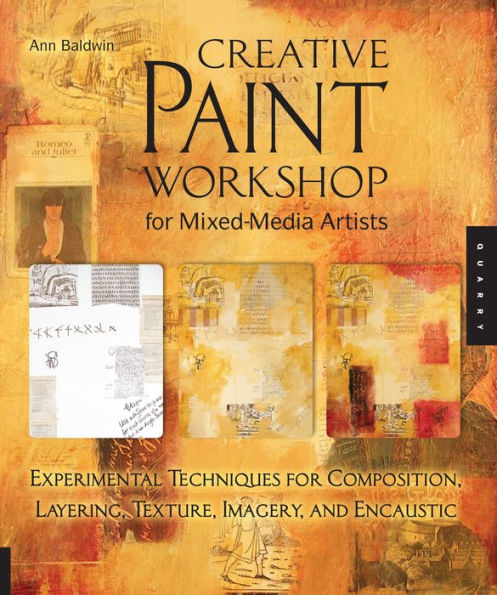Read an Excerpt
Drawing Media
Pens, pencils, pastels, and oil crayons are all useful in mixed-media painting. Bear in mind that acrylic is a wet medium, so your drawing media will need to be waterproof unless applied as a final touch. Even then, they won’t work if you plan to add a coat of protective medium or varnish to the piece.
There are many so-called waterproof pens on the market, but test them first on a separate sheet of paper. Brush a little water over the ink, after you have allowed it to dry. You’ll soon see if it “bleeds.” I have found Sharpie pens to be the most reliable and they come in a variety of tip sizes. For a more creative approach, try using acrylic ink (FW inks come in many different colors) with a calligraphic nib pen.
Graphite pencils are not entirely waterproof, but if a layer of soft gel medium is brushed over gently, the marks will be prevented from dissolving into a gray mess when the next layer is applied.
Cheap oil pastels contain very little oil and plenty of filler, making them very suitable for layered work. Unlike true oil sticks, they will not entirely resist acrylics, so they can be easily covered up. They also write well on even the most plastic acrylic paint. The dry particles in charcoal and soft pastels make them vulnerable to lifting by wet media, so it’s best to avoid using them.
The ingredients of crayons and colored pencils vary widely. Those with hard leads will not deposit color on a polymer medium or paint surface. The softer and creamier the pencil, the more likely they are to work. Of course, you can always use colored pencils to decorate your pieces of paper collage before they are stuck down. Black-and-white images colored in with colored pencils can be fun. Be absolutely sure that you are not using water-soluble crayons or pencils—usually labeled “watercolor”—or the marks will turn to wet paint when subsequent layers of paint are added. Caran d’Ache makes stick wax-oil crayons called Neocolor I, which work extremely well on top of acrylics, even when there is texture underneath. Though more expensive than most drawing crayons, they are waterproof, lightfast, and come in a variety of colors.



